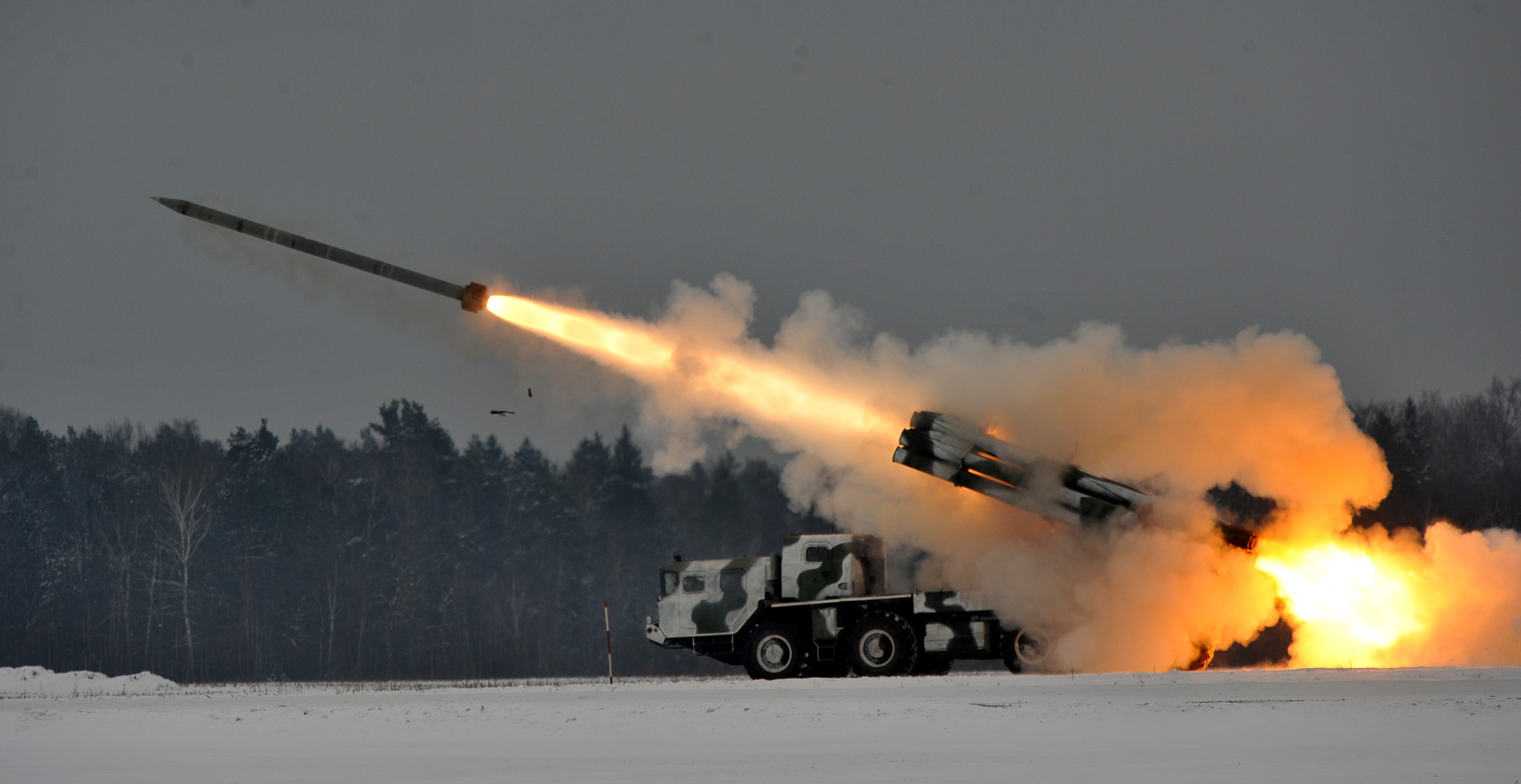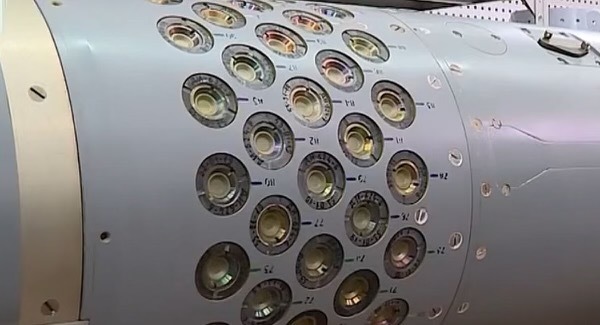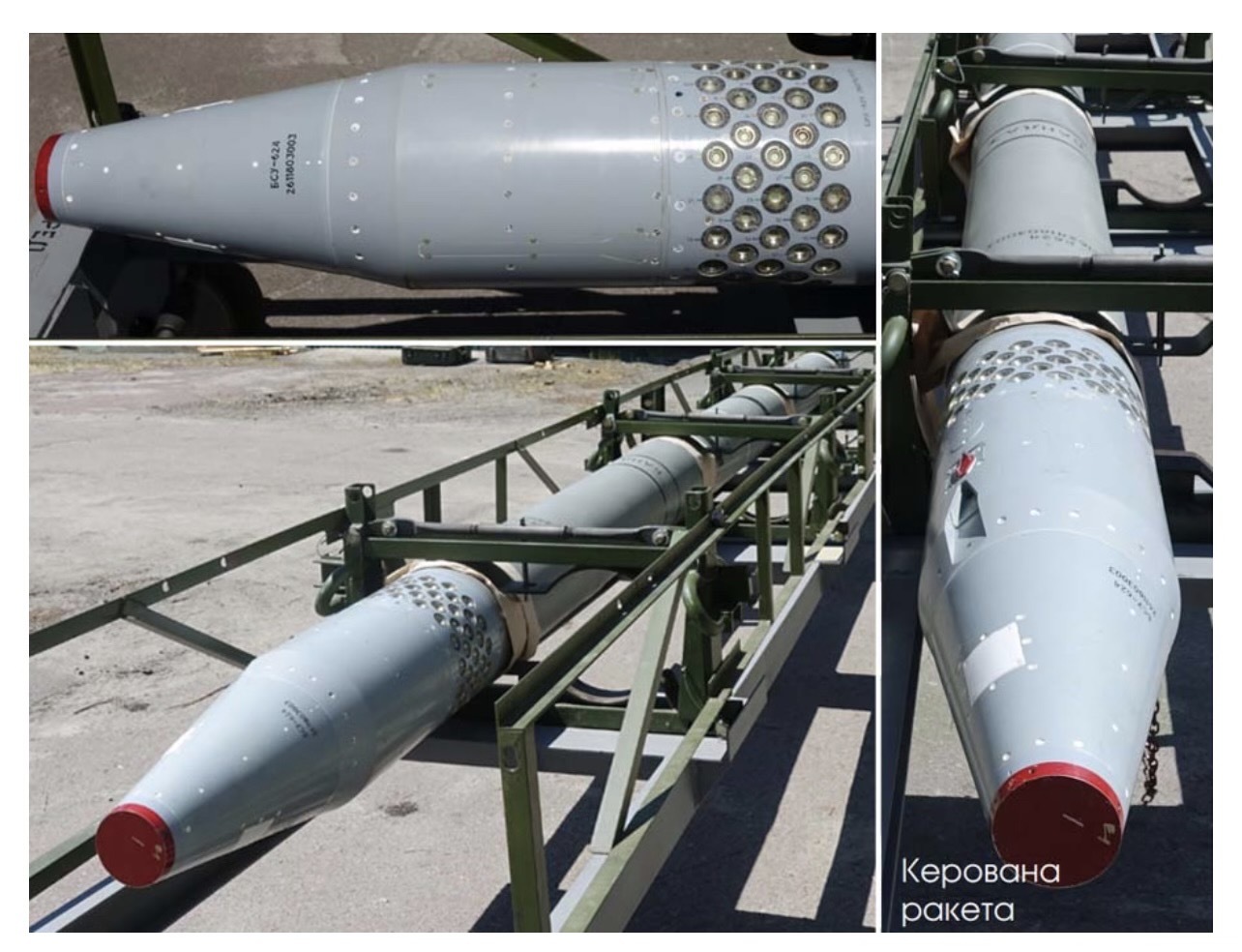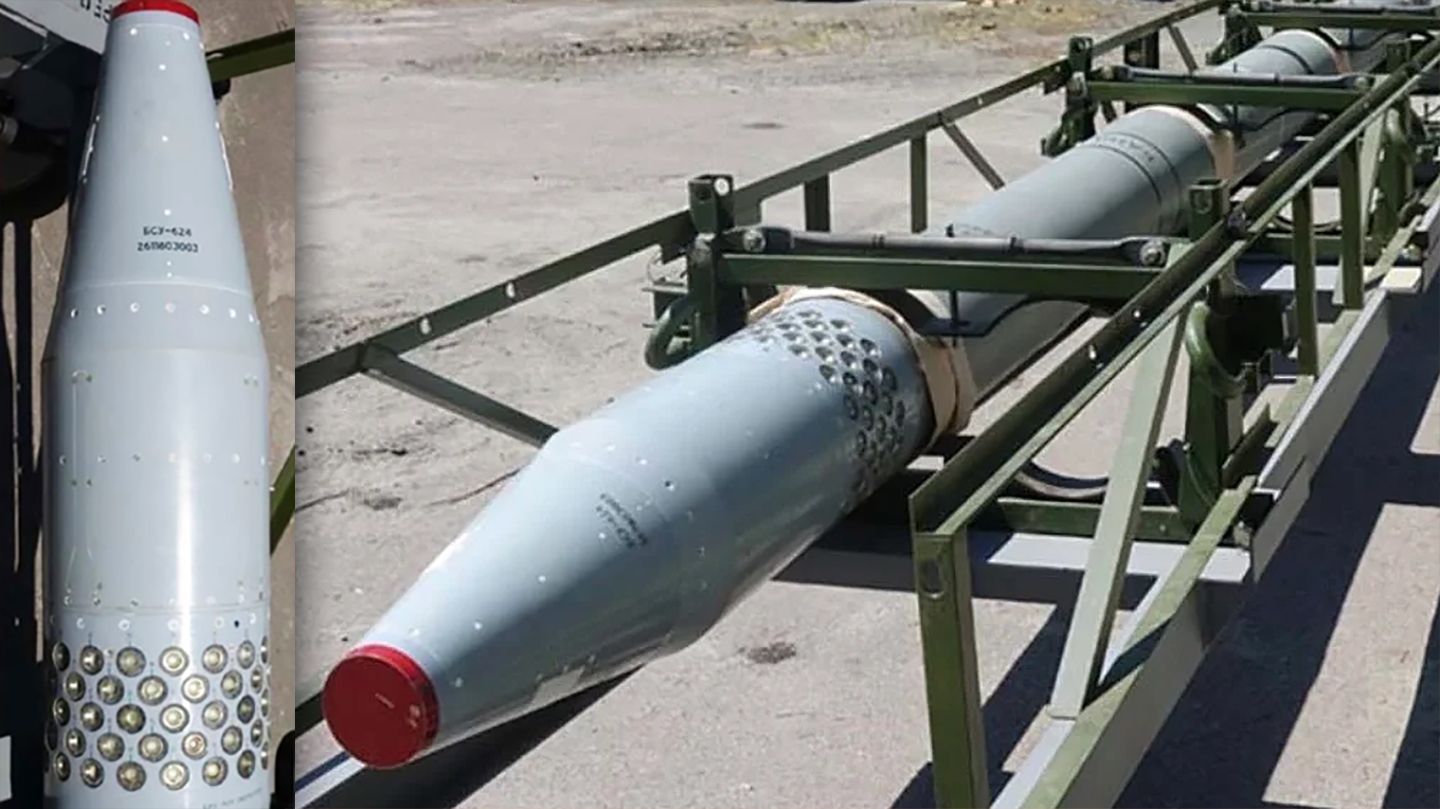With little fanfare, Ukraine has developed and used a guided artillery rocket in combat with a longer range and heavier warhead than the vaunted Guided Multiple Launch Rocket Systems (GMLRS) munitions provided by the U.S. and allies.
Called the Vilkha-M, it is a modified 7.6m (25-foot) long Soviet BM-30 Smerch multiple launch rocket system (MLRS) artillery rocket.

The Vilkha-M has a range of 110km (68 miles) and a 300mm, 485-pound warhead that can hit targets with great accuracy, Ivan Vinnyk, first deputy head of the National Association of Ukrainian Defense Industries, told The War Zone Tuesday.

By comparison, the GMLRS munitions – fired by the M142 High Mobility Artillery Rocket Systems, or HIMARS and the M270 Multiple Launch Rocket System (MLRS) provided to Ukraine – have a range of up to about 80km (about 50 miles) and a 227mm, 200-pound warhead.
“Yes, the Vilkha has been used in combat,” Vinnyk said Tuesday during the U.S.-Ukraine Security Dialogue XV conference held at the National Press Club in Washington. He could not disclose the exact location of where the Vilkha-M missiles were used.

In subsequent conversations on Wednesday, Vinnyk told The War Zone that the Vilkha-M modification program began in 2018 and that about 100 units have been produced.
They were first used in combat in May, 2022, he added.
Their precision, he said, is boosted by so-called “gas rudders” – scores of small holes emitting propellant – used to direct the missile on the target via GPS. While the Vilkha-M is said to be quite accurate and a precision munition, just how accurate it is isn’t disclosed at this time.

Questions about the use of the Vilkha-M were raised last week after the occupied Azov Sea port city of Mariupol – some 50 miles away from the nearest Ukrainian units at the time – was hit on successive nights.
While it is possible that GMLRS were used in those attacks, it is not inconceivable to think that the Vilkha-M may have been, but Vinnyk would not divulge that information.
Though so far produced in small numbers, the Vilkha-M gives Ukraine a munition that reaches 36 percent farther with more than twice the payload of the GMLRS.

And there are plans underway, said Vinnyk, to modify the Vilkha-M to boost the range to 150km (about 93 miles).
As with where the Vilkha-Ms have been used, Vinnyk declined to specify exactly when the longer-range variants might be ready or how many will be produced.
“Let’s say, hopefully just in time for the widely estimated date of counter-offensive on the south towards Azov Sea,” he told The War Zone.
The new variants, he added, will not be tested before they are used in combat.
“The tests will be at the battlefield,” he said.
The extended range Vilkha-Ms would have about the same range as the Ground Launched Small Diameter Bomb (GLSDB) that the Pentagon recently authorized for Ukraine, but with a much larger warhead and much higher kinetic punch.
It would be especially useful against targets like bridges, large structures and heavy fortifications that are ill-suited for both GLSDB and GMLRS.
But even with a range of 93 miles, the new Vilkha-M variant would still have less than half the range of the U.S.-produced Army Tactical Missile System (ATACMS) short-range ballistic missiles, which can hit targets at about 200 miles away.
But so far, the U.S. has refused to provide those to Ukraine.
“Still it’s not bad,” Vinnyk said Tuesday at the US-Ukraine Security Dialogue XV conference of the modified Vilkha-M in the works. “It’s far better than we have right now.”
Trying to ascertain just how active Ukraine is when it comes to developing and fielding longer-range precision weapons of its own has been a murky proposition at best. There has been speculation that they could have revived their at one time fairly mature home-grown ballistic missile program, for instance. Regardless, Vilkha-M is a rare piece of evidence that Ukraine is very much capable and actively working on — while under constant assault — bringing its own long-range, hard-hitting weapons to the fight, even if in limited numbers.
Contact the author: howard@thewarzone.com
